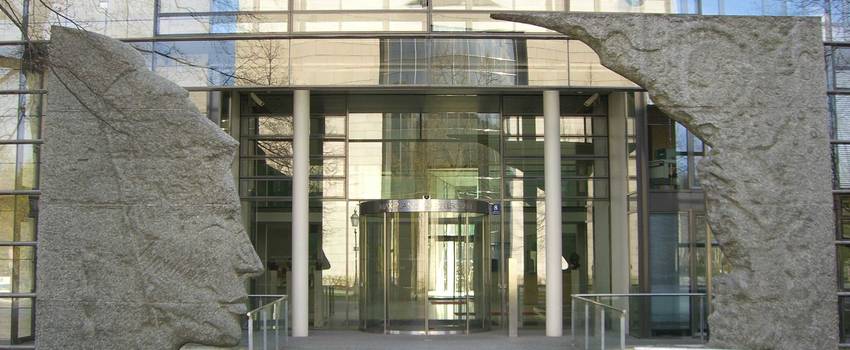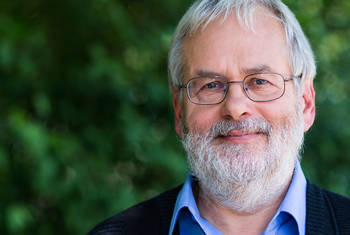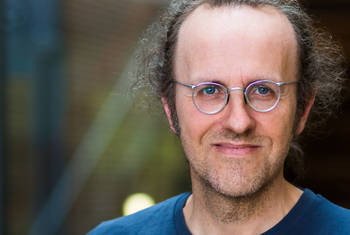Ulrich R. Christensen What Generates the Magnetic Field of the Jupiter Moon Ganymede?
Ulrich Christensen is the Director of the Max Planck Institute for Solar System Research, Göttingen. Christensen’s research revolves around the interior structure and dynamics of planets in the solar system. His overarching question interrogates the similarities and differences between planets and what makes the Earth a habitable planet. In particular, Christensen investigates the magnetic fields of different planets, by looking at a dynamo process model. For this and his other fields of research, Christensen was elected to the German National Academy of Sciences Leopoldina, as a fellow of the American Geophysical Union and as an honorary fellow of the European Union of Geoscience.
Area of Research
Solar System Research, Dynamics of Planets
since 2002
2011-2013
Managing Director
Max Planck Society (more details)
The Max Planck Institute for Solar System Research
2005-2007
Managing Director
Max Planck Society (more details)
The Max Planck Institute for Solar System Research
1992-2003
Professor of Geophysics
University of Göttingen (Georg-August-Universität Göttingen)
1991-1992
Research Fellow
Max-Planck Institute Mainz
1988
Visiting Professor
University of Utrecht
1986-1991
Heisenberg Research Fellow
Max-Planck Institute Mainz
1985-1986
Lecturer
University Karlsruhe
1982
Postdoctoral Fellow
Arizona State University, Tempe
1981-1985
Postdoctoral Researcher
Johannes Gutenberg University Mainz (Johannes Gutenberg-Universität Mainz)
1985
Habilitation
Johannes Gutenberg University Mainz (Johannes Gutenberg-Universität Mainz)
1980
PhD in Physics
Braunschweig University of Technology (Technische Universität Braunschweig)
1977
Diploma in Physics
Braunschweig University of Technology (Technische Universität Braunschweig)
Prizes
- Augustus Love Medal of the European Geosciences Union (2009)
- Gottfried-Wilhelm Leibniz Prize (1994)
- Gerhard-Hess Award of the Deutsche Forschungsgemeinschaft (1988)
Fellowships
- Member of Göttingen Research Council (2007-2014)
- Member of Solar System Working Group at ESA (2004-2006)
- Honorary fellow of the European Union of Geosciences (2003)
- German Representative, Life & Environmental Science Standing Committee of ESF (2001-2003)
- Fellow of the American Geophysical Union (2000)
- Chairman of the German Geophysics Research Association (FKPE) (1999-2001)
- Elected to the Deutsche Akademie der Naturforscher Leopoldina (1999)
- Elected to the Göttingen Academy of Sciences (1995)
 © Maximilian Dörrbecker
© Maximilian Dörrbecker
Max Planck Society
"The Max Planck Society is Germany's most successful research organization. Since its establishment in 1948, no fewer than 18 Nobel laureates have emerged from the ranks of its scientists, putting it on a par with the best and most prestigious research institutions worldwide. The more than 15,000 publications each year in internationally renowned scientific journals are proof of the outstanding research work conducted at Max Planck Institutes – and many of those articles are among the most-cited publications in the relevant field." (Source)
Institute
The Max Planck Institute for Solar System Research
"Our cosmic home is the main focus of the scientific research performed in the Max Planck Institute for Solar System Research (MPS): the solar system with its planets and moons, its comets and asteroids, and of course with the Sun.
The researchers develop and build scientific instruments for investigating these bodies in cooperation with engineers who are highly qualified and experienced specialists. The instruments are mainly used in outer space, which is made possible through the institute’s collaboration in numerous missions of international space agencies such as ESA and NASA. The data analysis and interpretation is complemented by theoretical models and simulations.
The Max Planck Institute for Solar System Research succeeded the Max Planck Institute for Aeronomy in 2004 by a simple name change. The institute was founded in 1957 in Katlenburg-Lindau. Recently, the institute's location was moved to Göttingen. The institute's new home can be found close to the Northern Campus of the University of Göttingen." (Source)
Map
Over decades, beliefs such as ’the magnetic fields of planets in our solar system are all the same’ or ’moons don’t have magnetic fields’ were widely held. Using the example of Ganymede, Jupiter’s biggest moon, both premises were proven wrong. ULRICH R. CHRISTENSEN examines the theory of the so-called iron snow regime as the cause of magnetism: This theory assumes that iron crystallizing at the top of Ganymede’s core, sinking down as snowflakes, and remelting at greater depth generates a dynamo process within the core and creates the magnetic field. A simulation tailored to the scenario clearly displayed the characteristics of Ganymede. As explained in this video, the insights gained hereby confirm the theory of the iron snow regime driving the dynamo process of Jupiter’s biggest moon. Furthermore, the model matches the other known facts about Ganymede. More details about the moon are expected in the early 2030s when the JUICE Mission will provide further data.
LT Video Publication DOI: https://doi.org/10.21036/LTPUB10267
Iron Snow Dynamo Models for Ganymede
- Ulrich R. Christensen
- Icarus
- Published in 2015









